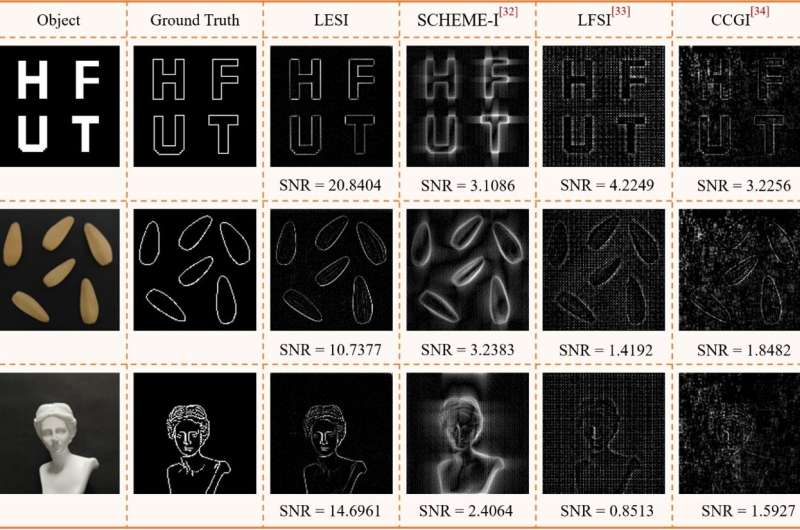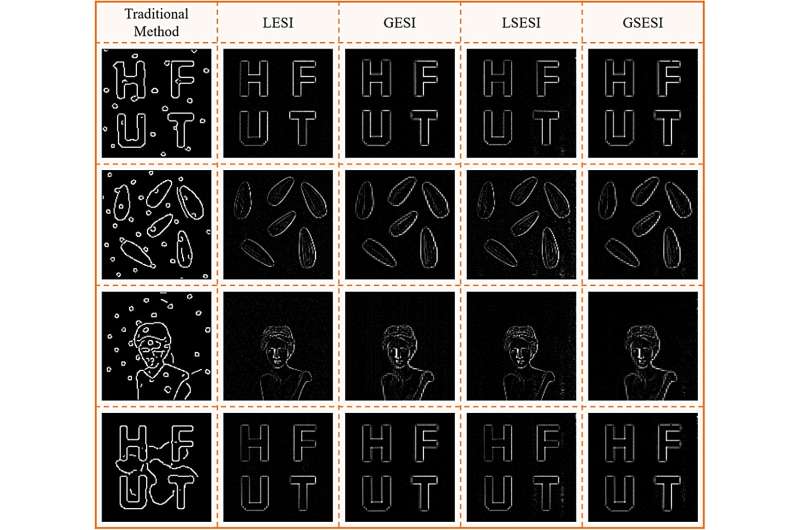
Edge detection is the process of outlining objects in a scene by identifying areas where changes in color or intensity signal boundaries between objects. It is vital in computer vision applications like object recognition, image segmentation, and feature extraction. Traditionally, its accuracy depends on image quality.
In visually noisy scenes, such as those that are foggy or obscured by biological tissues, conventional methods struggle. To tackle this challenge, a joint research team has developed a noise-resistant method for detecting object edges without prior imaging.
The research, published in Intelligent Computing, presents a method called edge-sensitive single-pixel imaging. In scenarios where obtaining clear images through conventional optical methods is challenging due to factors such as severe light pollution, the new method proves highly effective in accurately detecting object edges despite the presence of noise.
To achieve this breakthrough, the researchers designed modulation patterns by convolving standard Hadamard single-pixel imaging patterns with second-order differential operators. This differential edge detection system significantly enhances noise immunity, ensuring sharp and precise edge identification. Notably, the method exhibits remarkable real-time edge detection performance for moving objects, showcasing its potential for security checks in non-visible bands.

The study also introduces a single-round derivative of the new method that reduces the number of modulation patterns required for edge detection, effectively halving the detection time. Despite this reduction, the method maintains a high signal-to-noise ratio and requires fewer modulation patterns compared to previously reported edge detection schemes.
Furthermore, the research team explored the new method in combination with the Laplacian and Laplacian of Gaussian operators. Results indicated similar noise robustness, but using the former produced sharper edges, whereas using the latter yielded slightly coarser edges.
In rigorous comparisons, the new method outperformed existing schemes in terms of edge sharpness and signal-to-noise ratio. Additionally, under challenging experimental conditions with severe light pollution from a laser, both Laplacian variants surpassed standard imaging methods. The method delivered completely noise-free edge detection results, offering tremendous potential for practical applications.
The new method opens up new possibilities for image processing by pre-coding modulation patterns to achieve direct results in an “image-free” manner. This eliminates the influence of noise, paving the way for incorporating other image processing procedures, such as homomorphic filtering, to further enhance results. The researchers envision optimizing the illumination patterns used in this work and exploring end-to-end optimization for future advancements.
More information:
Mengchao Ma et al, Direct Noise-Resistant Edge Detection with Edge-Sensitive Single-Pixel Imaging Modulation, Intelligent Computing (2023). DOI: 10.34133/icomputing.0050
Provided by
Intelligent Computing
Citation:
Breakthrough method for robust and effective edge detection (2023, October 10)
retrieved 16 October 2023
from https://techxplore.com/news/2023-10-breakthrough-method-robust-effective-edge.html
This document is subject to copyright. Apart from any fair dealing for the purpose of private study or research, no
part may be reproduced without the written permission. The content is provided for information purposes only.







